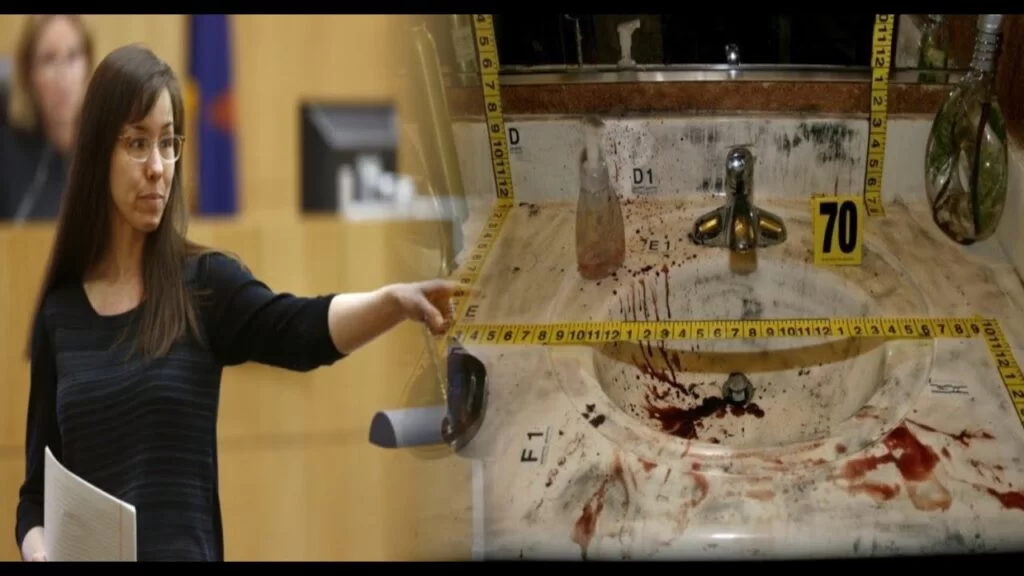The Controversial Role Of Crime Pictures In The Travis Alexander Case
The case of Travis Alexander remains one of the most talked-about and polarizing criminal trials in recent history. The crime scene images associated with Travis Alexander have significantly influenced public perception and media narratives surrounding this harrowing event. These visual records not only serve as crucial evidence but also provide critical insights into the circumstances leading up to his tragic death.
From the moment it entered the public eye, the Travis Alexander case generated intense debate and widespread fascination. The crime scene pictures of Travis Alexander captured the attention not only of legal experts but also of the general public. The intricate nature of the case, coupled with the emotional testimonies and graphic evidence, turned it into a widely discussed topic.
In this article, we explore the crime scene pictures of Travis Alexander in depth, analyzing their significance, legal ramifications, and influence on the trial's outcome. We will also delve into the broader context of the case, including its impact on the legal system and public sentiment, offering a comprehensive view of this complex and emotionally charged case.
- Drake Milligans Personal Life Exploring His Marriage And The Woman Behind His Success
- Exploring Emily Compagno A Closer Look At Her Height And Achievements
Table of Contents
- Biography of Travis Alexander
- Overview of the Crime
- The Role of Crime Scene Pictures
- The Legal Process
- Media Impact and Public Perception
- Psychological Aspects of the Case
- Ethical Considerations in Using Crime Scene Pictures
- Forensic Evidence and Crime Scene Pictures
- Consequences of the Case
- Future Implications for Similar Cases
Biography of Travis Alexander
Before examining the significance of the crime scene pictures of Travis Alexander, it's essential to understand the life and legacy of Travis Alexander himself. Born on December 15, 1978, in California, Travis Alexander was a dynamic entrepreneur and motivational speaker renowned for his charisma and success in the self-help industry.
Personal Data and Background
Here is a summary of Travis Alexander's personal information:
| Full Name | Travis Lee Alexander |
|---|---|
| Date of Birth | December 15, 1978 |
| Place of Birth | California, USA |
| Profession | Entrepreneur, Motivational Speaker |
| Date of Death | June 9, 2008 |
Travis Alexander's life was marked by both achievements and controversies, making his case all the more compelling. His untimely death left behind a legacy that continues to be analyzed and debated by the public and legal experts alike.
- Comprehensive Guide To Understanding And Managing Pettitis
- Mary Theresa Brunner A Beacon Of Change In The World Of Social Activism
Overview of the Crime
The murder of Travis Alexander was a brutal and shocking act of violence that shook the nation. On June 9, 2008, Travis was found stabbed 29 times in his Mesa, Arizona home. The case quickly garnered national attention due to the graphic nature of the crime and the complex relationship between Travis and his former girlfriend, Jodi Arias.
Key Details of the Crime
- Date: June 9, 2008
- Location: Mesa, Arizona
- Suspect: Jodi Arias
- Cause of Death: Multiple stab wounds
The investigation into Travis Alexander's murder was extensive, with crime scene pictures playing a vital role in reconstructing the events leading up to his death. These images provided critical clues and context for law enforcement officials.
The Role of Crime Scene Pictures
The crime scene pictures of Travis Alexander are among the most critical pieces of evidence in this case. Captured at the crime scene, these images provided investigators with invaluable information about the nature of the attack and the condition of the victim.
Significance of Crime Scene Pictures
The crime scene pictures of Travis Alexander helped establish several key facts:
- They revealed the severity and extent of the injuries inflicted on Travis.
- They documented the crime scene, offering insights into the layout and positioning of objects.
- They were used in court to vividly illustrate the brutality of the crime.
While disturbing, these images were instrumental in building the prosecution's case against Jodi Arias, providing a visual narrative of the events that unfolded on that fateful day.
The Legal Process
The legal proceedings surrounding Travis Alexander's murder were highly publicized and intense. Jodi Arias faced trial for first-degree murder, and the crime scene pictures of Travis Alexander were central to the prosecution's case.
Key Legal Milestones
- Arrest of Jodi Arias: November 2008
- Trial Begins: January 2013
- Verdict: Guilty of first-degree murder (May 2013)
The trial was marked by dramatic testimonies, including Jodi Arias's emotional recounting of the events. The crime scene pictures of Travis Alexander were frequently referenced during the proceedings, serving as a stark reminder of the gravity of the crime and its impact on those involved.
Media Impact and Public Perception
The Travis Alexander case received extensive media coverage, with crime scene pictures playing a significant role in shaping public perception. The graphic nature of these images made the case particularly sensational, capturing the attention of millions across the country.
Impact on Public Opinion
The media's portrayal of the crime scene pictures of Travis Alexander influenced public opinion in several ways:
- They heightened the sense of shock and outrage over the crime, amplifying the emotional response of the public.
- They fueled debates about the credibility of Jodi Arias's testimony, sparking discussions about the motivations behind her actions.
- They sparked broader discussions about the ethical implications of using crime scene images in media and legal contexts.
While the crime scene pictures provided invaluable evidence, they also raised important ethical questions about the impact of such images on society and the individuals involved.
Psychological Aspects of the Case
Understanding the psychological dynamics of the Travis Alexander case is essential to comprehending the motivations behind the crime. The relationship between Travis and Jodi Arias was characterized by tension and issues of control, which were explored extensively during the trial.
Psychological Insights
Experts in psychology analyzed the crime scene pictures of Travis Alexander and the behavior of the individuals involved:
- The images revealed the level of violence and aggression present in the crime, offering insights into the mindset of the perpetrator.
- Jodi Arias's psychological state was scrutinized to determine her capacity for such an act, with experts weighing in on her mental health and motivations.
- The case highlighted the complexities of intimate partner violence, shedding light on the dynamics that can lead to such tragic outcomes.
These psychological insights contributed to a deeper understanding of the motivations and circumstances surrounding the crime, offering valuable lessons for future cases involving similar dynamics.
Ethical Considerations in Using Crime Scene Pictures
While crime scene pictures of Travis Alexander were essential to the legal process, their use also raised important ethical questions. The dissemination of graphic images in media and courtrooms can have profound effects on those who view them, including jurors, the public, and the victim's family.
Ethical Concerns
- Respect for the victim and their family: Balancing the need for evidence with the emotional toll on loved ones.
- Impact on the jury and public perception: Ensuring that graphic images do not unduly influence the fairness of the trial or public opinion.
- Balancing the need for evidence with the potential for trauma: Weighing the benefits of using such images against the potential harm they may cause.
Legal professionals and journalists must carefully navigate these ethical considerations to ensure that the use of crime scene pictures serves justice without causing unnecessary harm or exploitation.
Forensic Evidence and Crime Scene Pictures
Forensic analysis of the crime scene pictures of Travis Alexander provided critical insights into the crime. Experts meticulously examined the images to determine the sequence of events and the nature of the injuries.
Forensic Findings
- The crime scene pictures revealed the presence of defensive wounds on Travis's hands, suggesting he fought back during the attack.
- They helped establish the trajectory of the fatal stab wound, offering a clearer picture of how the crime unfolded.
- Forensic evidence corroborated the prosecution's theory of the crime, strengthening their case against Jodi Arias.
The detailed examination of the crime scene pictures played a crucial role in the conviction of Jodi Arias, demonstrating the importance of forensic analysis in modern criminal investigations.
Consequences of the Case
The Travis Alexander case had far-reaching consequences, affecting not only those directly involved but also the broader legal and social landscape. The crime scene pictures of Travis Alexander left an indelible mark on public consciousness, sparking important discussions about crime, justice, and media responsibility.
Key Consequences
- Jodi Arias was sentenced to life in prison without the possibility of parole, reflecting the gravity of the crime and its impact on society.
- The case sparked debates about domestic violence and its portrayal in media, raising awareness about the complexities of intimate partner relationships.
- It raised questions about the ethical use of graphic images in legal proceedings, prompting discussions about the balance between justice and sensitivity.
The legacy of the case continues to influence discussions about crime, justice, and media ethics, serving as a powerful reminder of the importance of responsible representation in high-profile cases.
Future Implications for Similar Cases
The Travis Alexander case serves as a cautionary tale for future legal proceedings involving graphic evidence. The crime scene pictures of Travis Alexander highlight the importance of balancing the need for evidence with ethical considerations, ensuring that justice is served while minimizing harm to those involved.
Lessons for the Future
- Legal professionals must carefully evaluate the necessity of graphic images in court, weighing the benefits against potential drawbacks.
- Media outlets should exercise restraint when disseminating such images to the public, prioritizing ethical responsibility over sensationalism.
- Public awareness of the ethical implications of crime scene pictures should be increased, fostering a more informed and thoughtful approach to high-profile cases.
As society continues to navigate the complexities of crime and justice, the lessons learned from the Travis Alexander case will undoubtedly inform future practices, ensuring that the pursuit of justice is balanced with respect for human dignity.
Conclusion
The crime scene pictures of Travis Alexander played a pivotal role in one of the most controversial criminal cases of our time. From their use in court to their impact on public perception, these images have left an indelible mark on the legal system and society at large.
We encourage readers to reflect on the ethical implications of using such graphic evidence and to engage in discussions about the broader issues raised by this case. Share your thoughts in the comments section below, and explore other articles on our site for further insights into crime and justice.



Detail Author:
- Name : Maye Kohler DDS
- Username : lemke.stephany
- Email : xgerlach@dach.com
- Birthdate : 1971-06-14
- Address : 339 Kallie Alley Suite 290 Lake Marquisland, MS 46978-9118
- Phone : +1-209-514-6074
- Company : Bednar and Sons
- Job : Bus Driver
- Bio : Possimus quos sed molestias. Quae ipsum eum dolor voluptatum minus est iste. Qui fugit provident dolores suscipit vero fugit eius.
Socials
tiktok:
- url : https://tiktok.com/@christiansen1975
- username : christiansen1975
- bio : Voluptas sunt dolorem et.
- followers : 817
- following : 2707
instagram:
- url : https://instagram.com/lauriane8023
- username : lauriane8023
- bio : Sunt repellat molestiae suscipit quod. Sed odit est modi et incidunt.
- followers : 2466
- following : 2602
facebook:
- url : https://facebook.com/lauriane_dev
- username : lauriane_dev
- bio : Enim exercitationem ad minus distinctio dolore eos dolorum.
- followers : 1256
- following : 12
linkedin:
- url : https://linkedin.com/in/laurianechristiansen
- username : laurianechristiansen
- bio : Fuga a quas excepturi. Et quia est eum ut.
- followers : 2422
- following : 1791